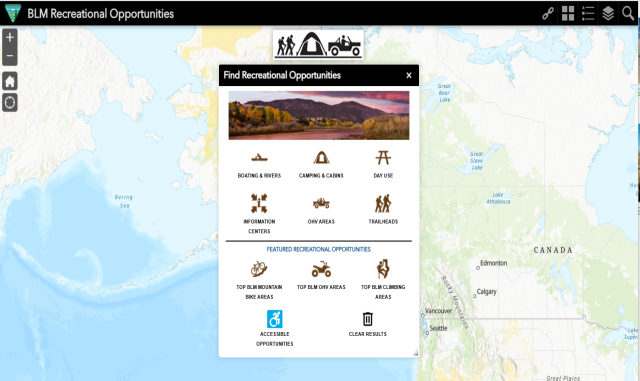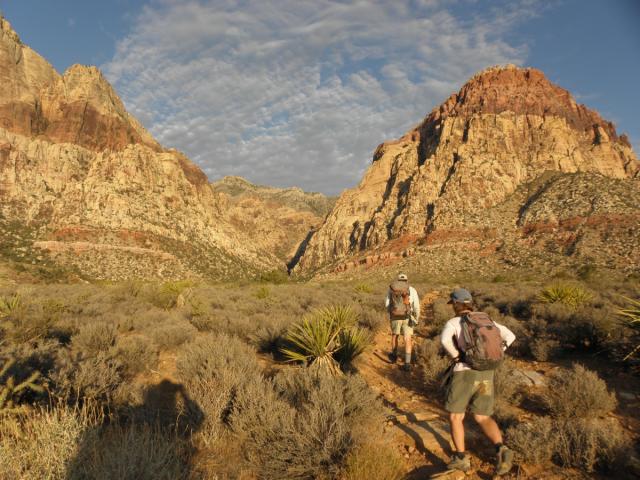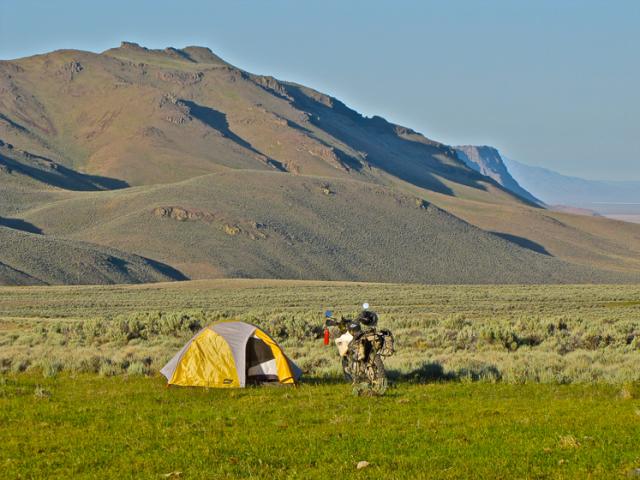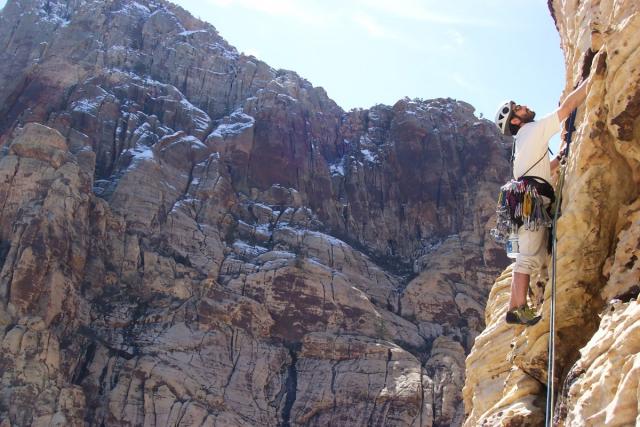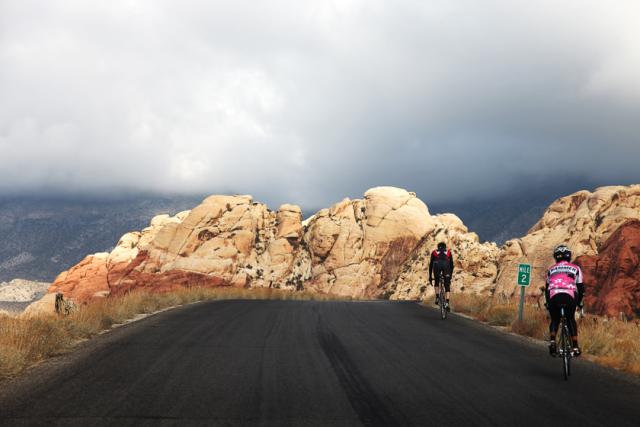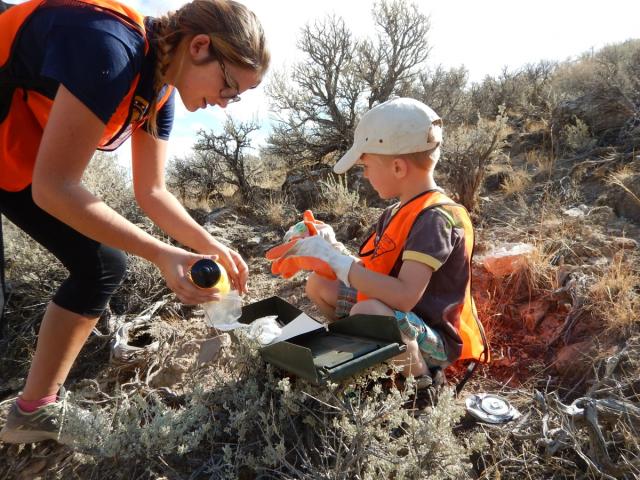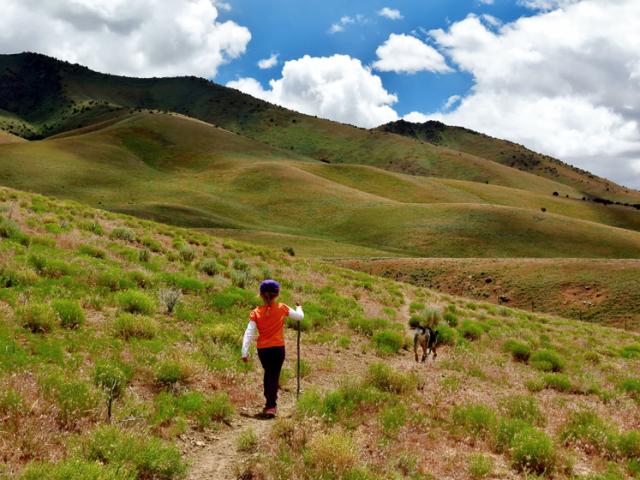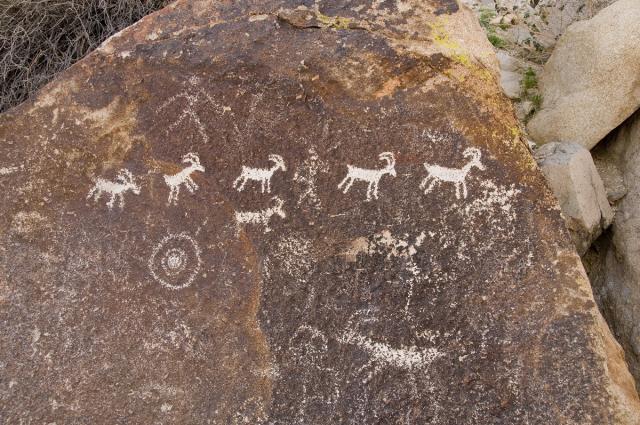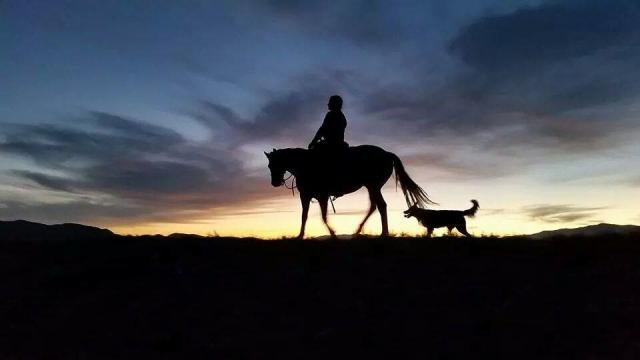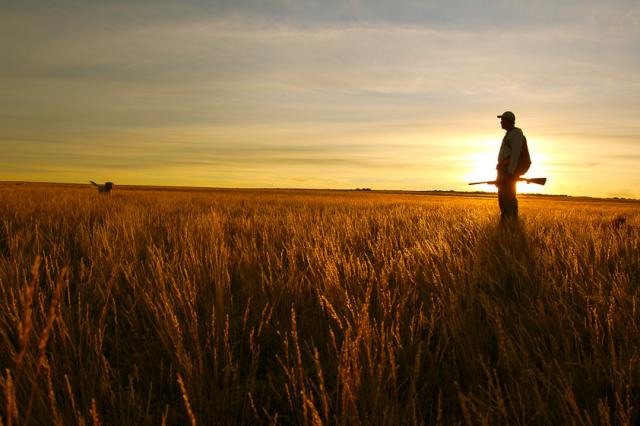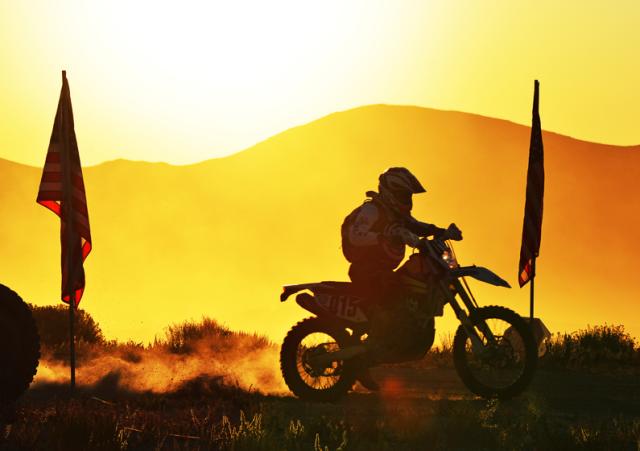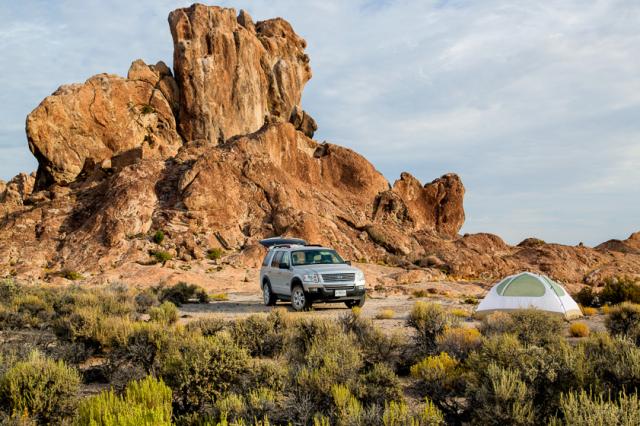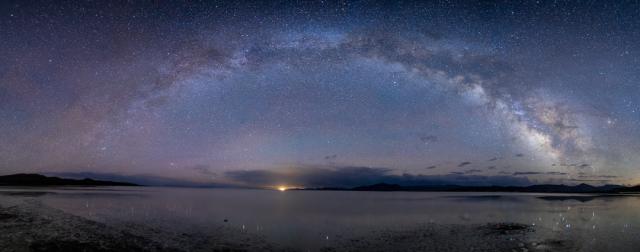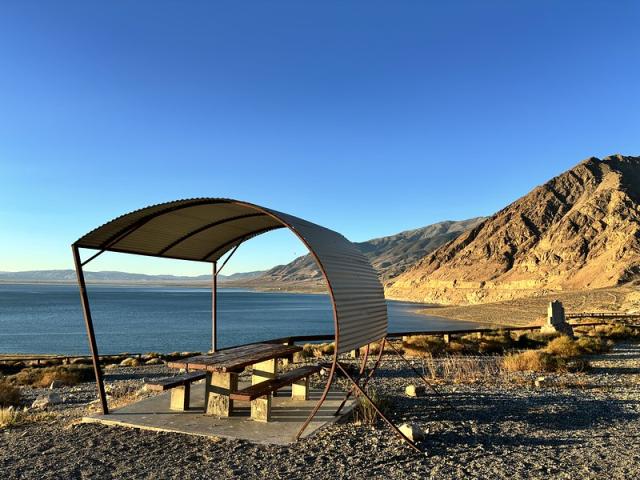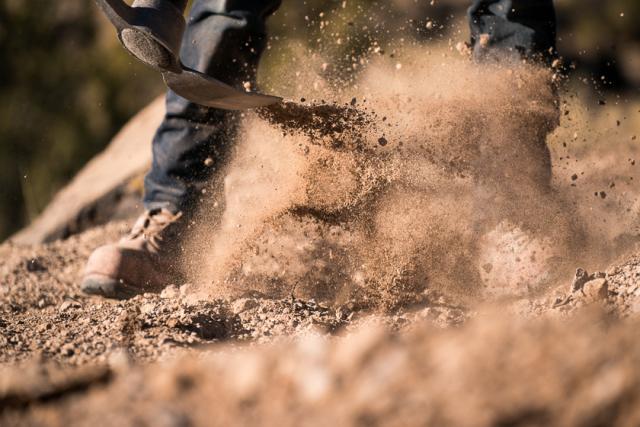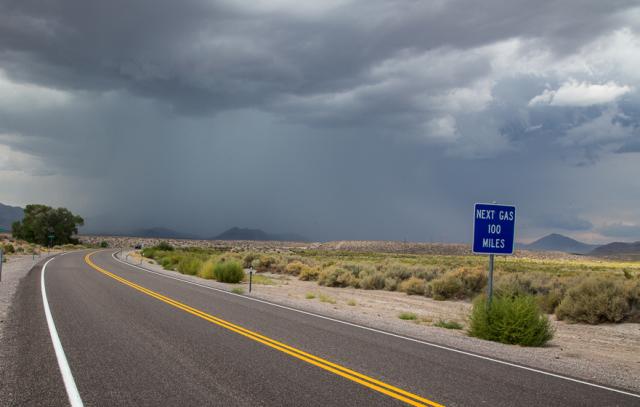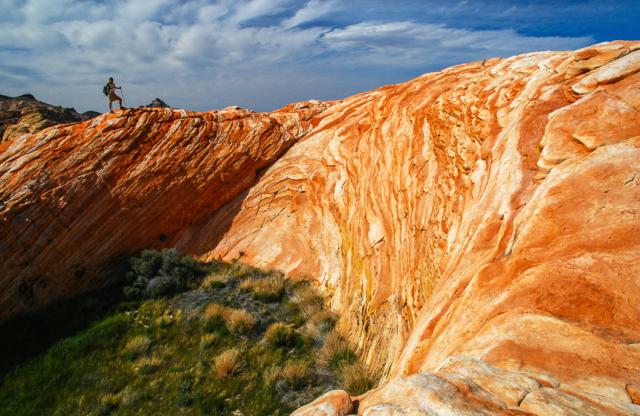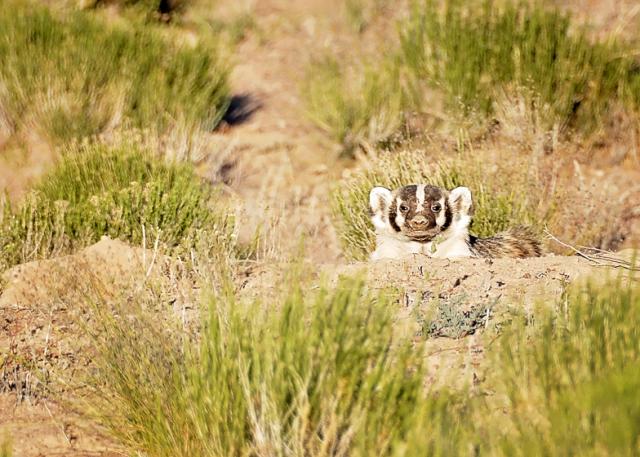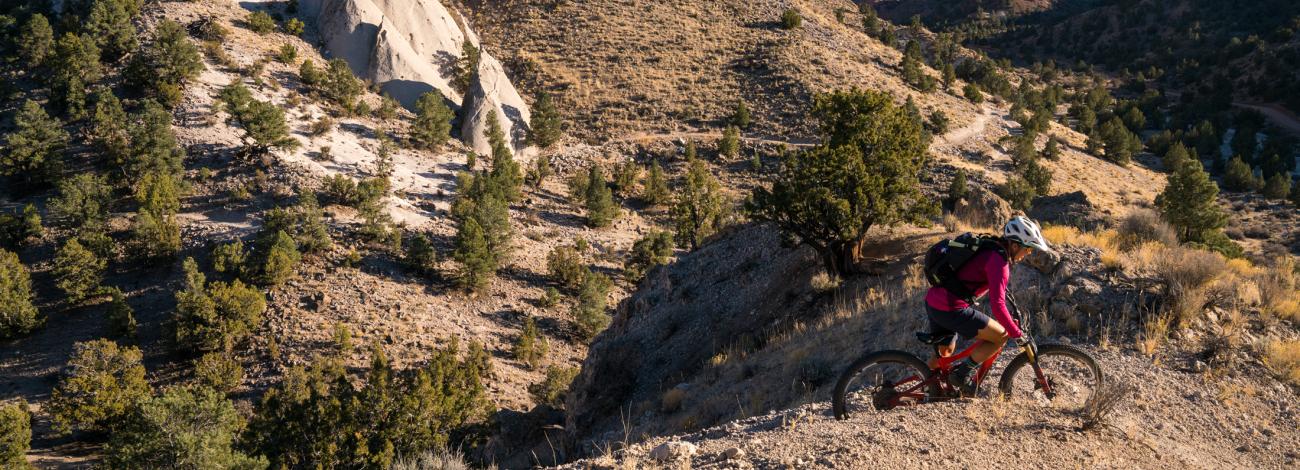
Nevada Recreation Activities
Find a BLM Recreation Site
Begin Your Adventure: Recreation Activities
- Backcountry
-
Immerse yourself in solitude and the subtle sounds of the backcountry. Backcountry describes a geographic area that is remote, undeveloped, isolated, or difficult to access. These serene areas can be a welcome relief and opportunity to connect with yourself and stunning landscapes of the American west.
Your public lands of BLM Nevada provide millions of acres of backcountry areas to enjoy.
Helpful Tips:
- Most of BLM Nevada public lands are considered backcountry.
- There are often no restrooms, campgrounds, cell service or even gas stations.
- Drive on existing or designated routes.
- Do not drive into designated Wilderness areas.
- Carry a map as well as a GPS device.
- Plan for self-rescue (consider a GPS communication device for safety).
- Know and be prepared for extreme weather.
- Bring extra fuel, tires, water, and food.
- Before you go, prepare for your trip using the Safety Checklist
- Contact your local BLM office for a map and for information on common hazards.
Need a suggestion on where to go? Visit the BLM Backcountry Byways website.
- Camping
-
Enjoy outstanding opportunities for free dispersed camping on BLM lands. Dispersed Camping
Dispersed camping is a term used for camping anywhere outside of a designated campground.
In Nevada, there are over 48 million acres of public lands, most of which can be used for dispersed camping.
Helpful Tips:
- Most BLM land offers free dispersed camping with a stay limit of 14-days. See the Rules and Regulations section.
- Campers must not leave any personal property unattended for more than 10 days.
- Check for regional fire information and fire restrictions before you leave home.
- Pay particular care with campfires.
- Follow Leave No Trace principles.
- Ask your local BLM office for a map, for updated restrictions, and for current information.
- To help identify where BLM public lands are located, please visit our National Data Map Viewer.
Front Country Camping
Front-country campsites generally include helpful amenities such as toilets, trash service, and picnic tables.
Helpful Tips:
- Most campsites managed by BLM Nevada are fee-free. However, some of the most visited sites may require a fee. Some sites can be reserved on Recreation.gov.
- Site improvements and conditions can change over time. Call your local BLM office to learn what to expect at each location.
- For additional tips on camping on BLM public lands, visit our camping page.
Campsites that require a fee (as of January 2025):
- Tabor Creek Campground ( Elko District Office)
- Wilson Reservoir and Campground (Elko District Office)
- Wildhorse Campground (Elko District Office)
- Zunino-Jiggs Campground (Elko District Office)
- Indian Creek Campground (Carson City District Office)
- Walker Lake Recreation Area Sportsman’s Beach Campground (Carson City District Office)
- Red Rock Canyon Campground (Southern Nevada District Office)
- Climbing
-
Take one of the nation's fastest growing hobbies outdoors. Nevada public land offers thousands of climbing opportunities ranging from sandstone to limestone to granite and front-country bouldering to big-wall outings of 2,000 feet.
When climbing in Nevada, it is important to note the sensitive nature of the rock here compared to other destinations. Climbing on wet sandstone weakens critical anchors, leaves rope grooves, widens cracks in the crags, and leads to cam failure.
Additionally, Nevada has some of the oldest and most prevalent rock-art in the United States. These pieces of cultural history are important to many individuals and cultures still living today. Please help us keep these lands open to the public by respecting sensitive areas.
Helpful Tips:
- During storms, stay out of canyons and washes. Seek shelter if lightning occurs.
- Wait 24 to 48 hours after rain or snow to climb sandstone.
- Please keep an eye out for, and avoid rock art.
- Respect cultural sites. Do not remove artifacts.
- Always follow Leave-No-Trace Principles.
- Always check in with the local BLM office to see if your destination has any restrictions in effect before climbing.
- Learn more on our BLM Climbing on Public Lands webpage.
Popular Climbing Destinations
- Red Rock National Conservation Area (Southern Nevada District)
- Arrow Canyon Wilderness
- Rainbow Canyon (Ely District)
- E-bikes
-
Enjoy a relaxing e-bike ride along any motorized road. Photo of Red Rock Canyon Scenic Loop in Southern Nevada. Please inquire locally about using an e-bike on mountain bike trails. To find the closest BLM office to the trail you are interested in, please stop in a BLM Field Office or visit NV Trail Finder which only display those trails that are legal for e-bike use.
Helpful Tips:
- All motorized routes (i.e. vehicle roads) on BLM lands are open to e-bikes.
- E-bikes are prohibited on mountain bike trails unless a BLM manager has issued a written decision authorizing e-bike use.
- Where e-bike are allowed, cyclists must yield to both hikers and horses. All cyclists should wait until the horse fully passes before continuing.
- When encountering another cyclist, yield to the rider moving uphill.
- Learn more on our BLM E-bikes on Public Lands webpage.
- Geocaching
-
Discover something unique every time you find a geocache. Geocaching is an outdoor activity where people use GPS devices or mobile apps to search for hidden containers, called "geocaches" or "caches," at specific locations all over the world.
Geocaching can be an excellent way to discover and learn about BLM public lands. BLM Nevada hosts several geocache locations. Additionally, many other informal geocaches may exist on public lands.
Helpful Tips:
- Respect private land and property.
- Be aware of your surroundings.
- Some geocaches are in extremely remote areas.
- Be prepared. Use the Safety Checklist as a guide for remote backcountry travel.
- Want to place a geocache? Check out these Frequently Asked Questions about Geocaching.
- Hiking
-
Grab the kids (and the "fur-babies") and head out your backdoor. Hiking is the most popular activity on public lands in Nevada. BLM lands provide everything from excellent dog walking and hiking opportunities “right out the back door” to world class scenic hikes in our National Monument and National Conservation Areas.
Helpful Tips:
- Hikers should yield to equestrians. If possible, step to the downhill side of the trail and avoid making sudden movements or loud noises that might startle the horse.
- When encountering another hiker, the hiker walking downhill must yield to the hiker walking uphill.
- In general, hiking is not restricted to trails, but please remember the Leave No Trace principles when exploring public lands.
- In multi-use recreation areas, “open riding areas” are posted. Those hiking should be aware of their locations and mindful of high-speed OHV usage.
- For safety tips and hiking etiquette, please visit the BLM Hiking on Public Lands.
Hikers with Dogs:
- Hikers with dogs should yield to all other trail users.
- While leashes are not required on all trails, you should keep your dog close and under control when passing children, horses, or other dogs.
- When you are out on public lands with your furry friends, please remember to pick up their poop and pack it out.
- Please check the trail website or call the local BLM field office for leash policy.
- Historic and Cultural Sites
-
Witness stories spanning thousands of years of human history. The BLM manages a wide variety of archaeological sites on the public lands, both historic and prehistoric. These public lands connect the past and the present through ongoing traditional uses and by holding irreplaceable evidence of human history.
The BLM manages cultural resources guided by law, regulation and policy, including a National Programmatic Agreement under the National Historic Preservation Act.
When visiting cultural and historic sites on BLM Nevada public lands, respect the significance of the artifacts that you come across. Leave them where they are found, and let others have a chance to see them as they were left behind hundreds of years ago.
Learn more about BLM Nevada’s archaeology program.
Helpful Tips:
- Do not touch petroglyphs or remove artifacts.
- Artifacts include any sites, tools, broken objects, and debris that were used by humans.
- Cultural resources on public lands may not be removed, damaged, disturbed, excavated, or transferred without a BLM permit.
- Historic sites such as cabins, sawmills, graves, trail traces, mining areas, town sites, ranches and railroads are closed to all forms of collecting.
- For more details about found objects, visit our Can I Keep This webpage.
- Report crimes to resources including vandalism, dumping and suspicious activity at 1-800-637-9152.
Notable Historic Sites:
- California Trail Interpretive Center
- Comstock National Historic District
- Lovelock Cave Historic Site (page pending)
- Rhyolite Historic Area
- Mt. Irish Archaeological District
- Horseback Riding
-
Slow down and reconnect with the wild west from horseback on millions of acres of public land, including designated Wilderness areas. Photo Credit: Karysa Perez From scenic vistas to winding canyons to open desert, horseback riding can be a great way to explore Nevada's public lands. BLM Nevada manages equestrian-friendly front country trails and campgrounds throughout the state. Experienced riders can also ride or dispersed camp in much of the backcountry.
Helpful Tips:
- Be prepared to encounter wild horses and burros which can be aggressive toward domestic horses.
- Not all trails are open or safe for horses. Check with local BLM district office recreation staff for current maps and trail conditions.
- Follow requirements for certified weed-free forage where required.
- Never tie horses within 200 feet of water sources.
- Clean up or scatter manure at trailheads and parking areas.
- Leave gates as you find them.
- Communication with hikers and cyclists is key to determine who should yield in uncertain trail conditions.
- When encountering another equestrian, yield to the rider moving uphill.
- Hunting and Fishing
-
Embrace the quiet thrill of a deep and rich human tradition. Photo Credit: Scott Mortimore There are endless opportunities to hunt and fish on our vast open lands and many streams in Nevada. In fact, hunting is allowed on over 99 percent of BLM public lands in Nevada. The BLM provides important access to hunting and fishing opportunities on public lands and waters, working with local communities and our valued partners to actively expand access to these opportunities.
Helpful Tips:
- Hunting and fishing licenses are managed by the Nevada Department of Wildlife (NDOW).
- Are you a commercial guide, or looking to book with a guide? BLM does manage commercial guiding on public lands. See our Special Recreation Permits page for additional information and contacts.
- Visit your local BLM office or NDOW Regional Office to speak with someone in person about proper licensing, permits, and commercial guiding.
- Additional information on safety tips, best practices and general information can be found on the BLM’s Fishing, Hunting and Shooting webpage.
Popular Fishing Destinations:
- East Fork of the Carson River (managed by BLM Nevada, located in California near the Nevada border)
- Pine Forest Recreation Area (Winnemucca District)
- Mountain Biking
-
Test your agility and endurance along mountain bike trails in Nevada's rolling deserts. Photo Credit: Hanks J. Nevada is a thriving mountain biking destination. With amazing trails in all corners of the state and more trail systems in development, BLM Nevada is leading the way in expanding access to riding opportunities.
BLM Nevada manages amazing trail systems near Reno, Carson City, Las Vegas, Henderson, Winnemucca, Ely, Elko, Caliente, and Austin.
Helpful Tips:
- Stick to existing trails. Trailblazing often creates a need to close areas to public usage. Only ride designated trails and mountain bike areas.
- Stay off any vegetation. Nevada’s plants look strong, but plant damage is slow to heal in Nevada’s harsh desert.
- Cyclists must yield to both hikers and horses. Cyclists should wait until the horse fully passes before continuing.
- When encountering another cyclist, yield to the rider moving uphill.
- When approaching other trail users such as equestrian riders and hikers from behind, use clear communication to avoid collision and startling horses.
Popular Mountain Biking Trails:
- Cottonwood Valley Trail (near Las Vegas, NV)
- Winnemucca Bloody Shins Trail (near Winnemucca, NV)
- Off-Highway Vehicles (OHV)
-
Rock crawl, sand ride, hill climb, or simply cruise among fragrant sagebrush and gritty sandstone. Photo Credit: Kyle Hendrix Nevada has a long, storied history in the OHV world. Desert racing has been going on in the Silver State for over 50 years and this has created a celebrated culture around the sport.
While we still celebrate many off-road racing events, most people use OHVs on BLM lands in Nevada just to ride and explore.
Helpful Tips:
- OHVs must be registered with the appropriate State agency where required.
- Equip motorcycles with an approved spark arrester and muffler that meets State regulated noise standards (generally 96 dB).
- Tall flags on the OHV (8 feet to the ground) are generally required for visibility.
- Most of Nevada is “checkerboard” of public and private land. This may not be signed.
- Respect private land and private property.
- Observe posted signs.
- Fenced areas mark sensitive wildlife and plant habitat and are "closed" to vehicle use.
- The "open" riding areas are posted.
- Be aware of those travelling on foot or with horses.
- Only ride designated trails and designated OHV areas. Do not create new trails.
- Stay off vegetation.
- Much of Nevada is open to travel on existing routes but some areas do require you to drive on designated routes or not use motorized vehicles at all.
- Find more information on our OHV Recreation webpage.
Top OHV Recreation Sites:
- Moon Rocks Recreation Area (page pending; Reno, NV)
- Sand Mountain Recreation Area (Fee Required; Northern Nevada)
- Winnemucca Sand Dunes (page pending, Winnemucca, NV)
- Wilson Canyon (Yerington, NV)
- Overlanding
-
Pack the rig and head for a true adventure. Overlanding is a growing form of adventure travel that involves driving to remote locations and camping with a vehicle. Overlanding is a growing activity here in Nevada. Whether you drive a full-sized vehicle, side-by-side, or motorcycle, Nevada is the perfect place for overlanding.
Helpful Tips:
- Drive on existing or designated routes.
- Don’t drive into designated Wilderness areas.
- Carry a map as well as a GPS device.
- Plan for self-rescue (consider a GPS communication device for safety).
- Know and be prepared for extreme weather.
- Bring extra fuel, tires, water, and food.
- Prepare for your trip using our Safety Checklist before you set off in Nevada’s backcountry.
If you are new to overlanding, consider joining a local club or hiring an approved guide to help you learn. Any situation can quickly become dangerous in the very remote backcountry of Nevada.
- Photography
-
Capture something breathtaking in one of the most remote states of the West. Photo Credit: Beau Rogers Some of the most photographed locations on public lands are within BLM Nevada. Imagine a snowy morning overlooking spectacular cliffs, or a gathering of 80,000 on the Black Rock Playa, or a ghost town with glimpses into a rough and tumble past.
Whether you enjoy landscapes, wildlife or wild horses, special events, dark and starry skies, ghost towns, racing, or just family photography, BLM Nevada offers stunning backdrops unlike anywhere else in the world.
Helpful Tips:
- Always respect private land and property.
- Recreational filming and photography do not require special permits.
- Each BLM office authorizes commercial filming on public lands within its jurisdiction. Find your local office.
- If you are a commercial photographer or filmmaker, determine if you need a permit.
Popular Photography Destinations:
- Winnemucca Sand Dunes (page pending, Winnemucca, NV)
- Red Rock Canyon National Conservation Area (Las Vegas, NV)
- Gold Butte National Monument (Las Vegas, NV)
- Picnicking
-
Savor the flavors of picnicking with peaceful views and fresh air. Photo Credit: Samantha Szeciorka/BLM With millions of acres of public land open to hiking and picnicking, it’s a little hard to narrow down the best location. BLM Nevada manages many developed sites that provide a nice spot for families near town or a welcome rest area for distance travelers.
Helpful Tips:
- Most tips for picnicking involve discouraging wildlife from picnic areas.
- Many wild animals carry transferable diseases spread by fleas, mites, ticks, etc. which may linger in areas where animals travel.
- Never feed wildlife.
- Do not encourage wildlife to come to picnic areas.
- Keep children away from animal dens and burrows.
- Dispose of trash and food scraps in garbage receptacles (or pack it out).
- Picnic facilities are generally first-come-first-serve.
- Rock Hounding
-
Your next treasure awaits discovery. Photo Credit: Leslie Kehmeier Rockhounding has a long a proud history in Nevada. As the driest state in the nation, we’ve got a lot of rocks that are all on clear display with little vegetation covering them up. Known for its mining history, there are many interesting minerals and fossils that go along with our unique geology.
Helpful Tips:
- Common rock specimens can be collected with hand tools only, for private use.
- A permit or contract is needed for commercial mining of common minerals such as sand, gravel, topsoil, landscaping rocks, and similar materials.
- In Wilderness and Wilderness Study Areas, the only collecting allowed is hobby collecting. This activity must not involve surface disturbance.
- Prohibited items include prehistoric tools and chips or flaking debris made of precious or semiprecious stones.
- The daily maximum is 25 pounds plus one piece of petrified wood collected per day.
- The yearly maximum is 250 pounds collected per person per year.
- Permits or contracts are required for pieces over 250 pounds.
- You may not trade, barter, or sell the petrified wood you collect without a contract from the BLM.
- Read more details on collecting on our Can I Keep This webpage.
- Learn more on our Rockhounding on Public Lands webpage.
Popular Rockhounding Destinations:
- Garnet Hill (Ely District)
- Oak Springs Trilobite Site (Ely District)
- Scenic Driving
-
Relish in freedom as you cruise through winding highways and desert corridors. Did you know Nevada has more mountain ranges than any other state? With over 300 mountain ranges, Nevada offers some of the most scenic driving in the U.S. The BLM manages a number of scenic byways and scenic roads for you to enjoy, all from the comfort of your vehicle.
Back Country Byways
Rediscover the splendor of the West’s public lands by traveling the adventurous “off-the- beaten-path” routes of the Bureau of Land Management’s Back Country Byways. As a unique part of the National Scenic Byways Program, Back Country Byways can lead you on less-traveled roads through alpine meadows and soaring mountains to sagebrush prairie and cactus desert. Choose a route to explore whether driving an air-conditioned car, four-wheel drive or dirt bike.
Helpful Tips:
- If you are visiting a back country byway, prepare for remote travel.
- Use the Safety Checklist to plan your trip.
Nevada Back Country Byways
- Bitter Springs Back Country Byway
- California Trail Back Country Byway
- Gold Butte Back Country Byway
- Fort Churchill to Wellington Back Country Byway
- Lovelock Cave Back Country Byway
- Lunar Crater Back Country Byway
- Mt. Wilson Back Country Byway
- Red Rock Canyon Back Country Byway (Las Vegas, Nevada)
- For more information, visit our Nevada Back Country Byways webpage.
Other Scenic Drives
- Rainbow Canyon (page pending, Caliente, Nevada)
- Wilson Canyon (Yerington, Nevada)
- Target Shooting
-
Practice your aim among designated shooting areas in Nevada's public lands. Photo Credit: Jesse Pluim/BLM Target shooting is generally allowed on BLM-administered public lands, as long as it is done in a safe manner, without damaging natural resources or improvements on public lands. Across all BLM-administered lands, discharging or using firearms, weapons, or fireworks is not allowed on developed recreation sites and areas except at sites specifically designated for that purpose.
Helpful Tips:
- Areas around Reno (Washoe County) and Las Vegas (Clark County) have specific restrictions on recreational shooting.
- For more information on Nevada ordinances, visit Nevada Hunting, Fishing, and Recreational Shooting.
- Other Nevada Counties may have ordinances restricting the discharge of firearms.
- Never shoot from or over any road or highway.
- Always use a safe backdrop.
- Glass and exploding targets are prohibited in some states.
- Do not use plastic pellets, tracer rounds, exploding rounds, or steel-core rounds.
- Do not attach targets to plants or place targets against rocks, plants, or solid objects. It is illegal to deface or destroy trees, signs, outbuildings, or other objects on federal lands.
- Carry in your targets and carry out all litter, brass and shell casings. All targets, shell casings, debris and trash must be removed.
- Cross-country travel is not permitted outside of OHV Open Area boundaries, so please stay on designated routes.
- During Fire Season, some areas may be closed to target shooting.
- Always check with local authorities and your local BLM office for any additional restrictions on shooting.
- Read more Tread Lightly tips for responsible shooting sports.
Popular Target Shooting Locations:
- Visit the National Shooting Sports Foundation page to see an interactive map of places to shoot.
- Learn more about BLM guidance on the Hunting, Fishing, and Recreational Shooting webpage.
- Wilderness and Wilderness Study Areas
-
Meander by foot, bicycle, or horseback in the peace of a designated Wilderness Area. Photo: Muddy Mountains Wilderness (Southern Nevada) On BLM land, Nevada has 49 designated Wilderness Areas and 60 Wilderness Study Areas (technically 9 of which are managed by BLM California).
What is the difference between a designated Wilderness and a Wilderness Study Area? In designated Wilderness, no mechanized or motorized travel is allowed. In contrast, Wilderness Study Areas may allow limited mechanized and motorized travel on existing primitive routes.
A wilderness, in contrast with those areas where man and his own works dominate the landscape, is hereby recognized as an area where the earth and its community of life are untrammeled by man, where man himself is a visitor who does not remain
Both designated Wilderness and Wilderness Study Areas provide some of the best hiking, horseback riding, and hunting opportunities on public lands in Nevada. These areas are prized for their remoteness and naturalness.
Helpful Tips:
- Do not count on cell service for help.
- Practice “Leave No Trace” principles.
- Self-reliance is key. See our Safety Checklist.
- Contact your local BLM office for a map and for current information.
- Find a designated Wilderness Area or Wilderness Study Area on the BLM National Data Viewer.
- Wildlife Viewing
-
See if someone is already watching you among the prairies of Nevada's wild frontier. Photo Credit: Jamie Cole The wide-open expanse of Nevada means that there are many opportunities for viewing wildlife in their natural habitat.
Helpful Tips:
- Take your time.
- Bring binoculars.
- Leave pets at home.
- Keep your distance. A distance of 75 feet is recommended, and a good rule of thumb is that you are too close if an animal changes its behavior.
- Respect wildlife by not using playback calls and sound recordings. Playback calls often cause unnecessary stress and confusion for wild animals.
- Read more tips on BLM Alaska’s Watchable Wildlife Viewing and Safety Tips
- Interested in Wild Horses and Burros? Check out our Go Wild Horse and Burro Watching brochure.
Popular Wildlife Viewing Destinations:
Safety Checklist
Luck favors the prepared. Whether geocaching, horseback riding, overlanding or more, use this checklist to prepare for traveling remote areas in BLM Nevada.
- Know who to contact. Cell service is limited in many areas of Nevada. Before you go, prepare offline maps, save directions, and save phone numbers in case your phone dies or does not work. Always have a back-up plan for navigation.
- Gas up. Make sure you have enough fuel to get you where you want to go and back.
- Maps. Don’t plan on signs telling you where to go. Carry a good map such as an “atlas and gazetteer” or similar. Better yet, there are many apps that allow you to download maps onto your phone in town and use them without cell service.
- Phone Chargers. Even if you do have cell service, a dead phone is no help.
- Be known. Let a friend or family member know exactly where you are going and when you plan on getting back.
- Tools. Help is unlikely to be found in many remote parts of Nevada’s BLM lands. Carry what you need to help yourself including some basic tools, fluid for your vehicle and a shovel in case you get stuck in sand or snow.
- Spare Tire. Check your spare and your tire changing tools. Roads in Nevada often have sharp rocks. Flats are common. If possible, carry a full-sized spare tire. Additionally, know how to change it.
- Food and Water. Think about what you might need to take care of yourself in case your vehicle is stuck or broken down. A day trip can easily turn into an overnight if trouble strikes.
- Clothes and Shoes. Bring some clothes and shoes appropriate for the weather in case you must walk to find help.
- Weather. Many of the backcountry roads in Nevada can become completely impassable when wet. Plan ahead! Check the weather!
- Slow Down. Wide open expanses might tempt you to up the pace a little. Remember, you are a long way from help and the consequences of an accident are high. Slow down and stay safe!
Rules, Regulations, and Permits
Regulations
On all BLM land in Nevada the following rule(s) apply:
14-day Stay-Limit:
- Unless otherwise noted, you can stay on BLM land in Nevada for up to 14 days in a 28-day period.
- This 28-day period starts when you first occupy a specific site.
- After 14 days, you must move to a different place that is at least 25 miles away from the site you were occupying.
- If you want more time at your site, you must obtain written permission from an authorized officer.
- For more information, see Federal Register, 58 (191), 51841-51842.
All other regulations:
All other regulations vary by location. Find your Local Office.
Permits
What is a Special Recreation Permit?
Special Recreation Permits (SRPs) are authorizations that allow specific recreational uses of the public lands and related waters. They are issued to manage visitor use, protect natural and cultural resources, and provide a mechanism to accommodate commercial recreational uses. Authorized by the Federal Lands Recreation Enhancement Act (FLREA), permits are required for the following types of uses: commercial, competitive, individual or group use in special area, vending activities on BLM public lands, or organized group activities and events.
Where can I get a Special Recreation Permit (SRP)?
Nevada Field Offices administer Special Recreation Permits (SRPs) for Commercial, Competitive, Organized Group Use, Vendor, and Special Area Use.
Please see Nevada Special Recreation Permit Program for the appropriate field office contact if you have any further questions or if you would like to hold a pre-application consultation.
Report Misconduct
We enjoy our wild and natural heritage, and we hope you do too.
If you see disrespect to our resources, vandalism, dumping or suspicious activity on BLM sites, call us at 1-800-637-9152 or by contacting your nearest field office.
Thank you for helping keep Nevada Public Lands protected for all to enjoy.

